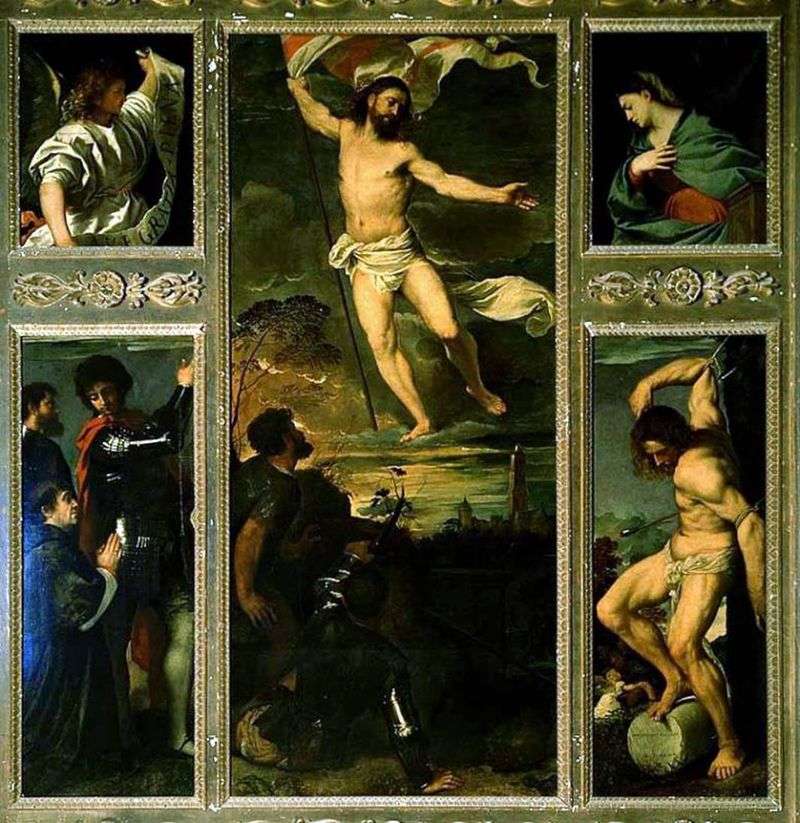
Polyptych Resurrection in Santi Nazarau e Celso in the city of Brescia was commissioned by Altobello Averoldi, the papal legate in Venice, in 1518/19. The format of the five panels is old-fashioned, but the dynamic relationship between Christ and St. Sebastian, predicting the triumph of both, anticipates the Baroque style.
Titian openly competes with the sculpture in two main figures, taking inspiration from the recently discovered Hellenistic statue of Lacoon and – in the case of Sebastian – one of the slaves – from the grave of Michelangelo for Julius II.
Titian’s impulse to capture bold gestures is hard to realize within the traditional polyptych structure, which required depicting various illustrated elements in a series of panels. This obsolete form was used at the request of the client, the papal legate Altobello Averoldi. He is also depicted with the holy patrons of the church, St. Nazarene and St. Celso, to whom he donated the altar.
New trends in Mannerism are also evident here, perhaps they are passed on to Titian through the work of Pordenone, and these elements subtly contribute to the dramatic intensity of the work. The landscape background is of the highest quality with a recognizable view of Brescia.
